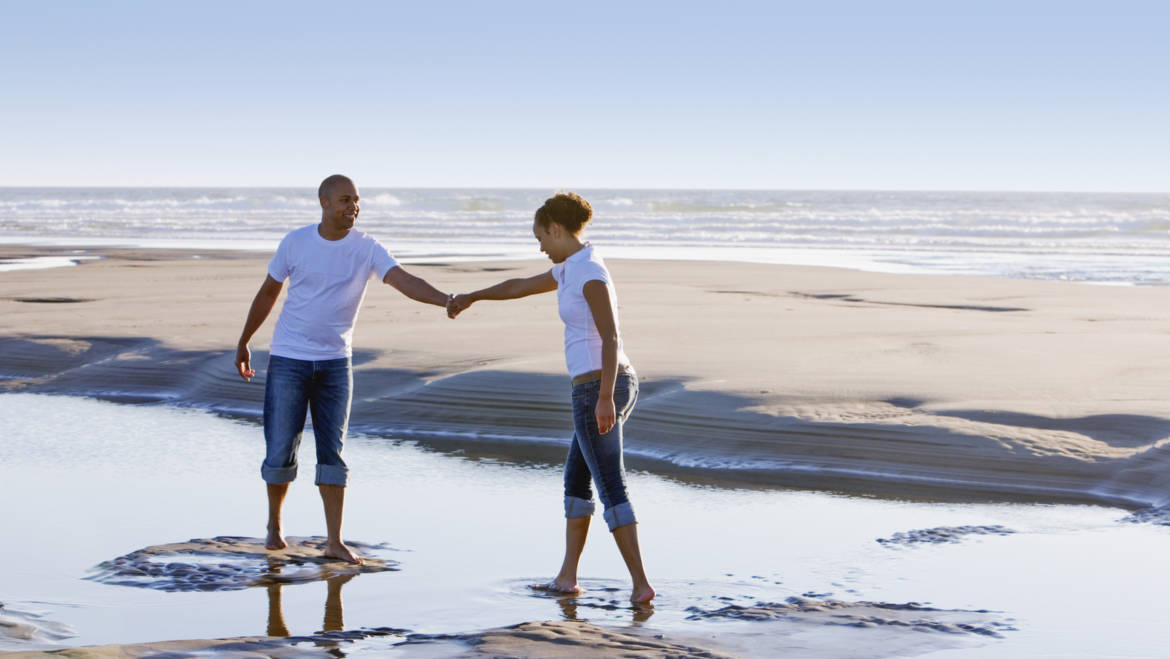It’s funny that often in couples therapy, certain themes seem to arise in clusters among my clients. This week, it’s been dynamics of closeness and distance, and how they play out in the larger couples dynamic. This is a powerful dimension of any relationship: Can we maintain enough closeness to feel connected, but enough distance so that we each still feel like whole, independent people even in the context of a committed relationship? It’s a delicate balance, to be sure, and one that even the strongest couples will sometimes struggle with.
As a couples counselor in Bethesda, I believe that in almost every couples relationship, one person is “in charge” of maintaining closeness while the other is “in charge” of maintaining distance. That is not to say that both partners don’t have an interest in both closeness and distance, but that overall, one person will probably have a greater need for closeness than the other, who has a greater need for independence. These roles are usually not overt, or even conscious. They stem from individual differences in skill, context, and — most importantly — preference. Roles can also shift depending on context; for example, one partner may be responsible for maintaining emotional closeness by doing things like planning dates and facilitating communication, while the other takes charge of maintaining physical closeness by facilitating cuddle time and initiating sex. When this delegation of responsibility works well, couples go through a continuous movement away from and toward each other. Sometimes they are very close, sometimes they are quite distant, and often they are traveling between those two extremes. Neither extreme is viable if it is constant; a healthy mix keeps things interesting, fresh, and dynamic. We enjoy the closeness when we’re close, and enjoy missing each other when we’re distant.
Where I see many MD couples counseling clients go off course is in getting caught up in attributing too much meaning to the way that these roles play out. For example, if the partner who is generally in charge of maintaining closeness starts to notice that s/he is fatigued by that responsibility, and start comparing her/his efforts to those of the partner, it’s easy to start thinking, “This isn’t fair. Maintaining emotional closeness is a huge responsibility! How dare my partner dump that all on me!” Similarly, the partner who is in charge of distance might think, “I’m so tired of my partner pressuring my all the time to give, give, give. Sometime I just need time to myself; why can’t s/he understand that?!”
If we can appreciate that both closeness and distance are necessary in order for a relationship to be healthy, then we can begin to fully appreciate each other’s efforts in maintaining them both. This requires each partner to acknowledge and accept the other’s needs, be comfortable with both closeness and distance, and willingly give in to the come-and-go dynamic that keeps closeness and distance constantly in flux. Distance should not be taken as a personal affront or an indication that the partner doesn’t care or doesn’t want to be close; rather, a move toward distance should be seen as an opportunity to enjoy independence and space, and a confirmation of respect for individuality within the context of a committed relationship. Closeness should not be seen as suffocating or pressure-laden; rather, a move toward closeness should be seen as an affirmation of love and affection, and a desire to be intimately known and loved by one’s partner.
How do dynamics of closeness and distance play out in your relationship?
Lindsey Hoskins & Associate provides couple, family, and individual therapy in downtown Bethesda, MD. Call (301) 200-5290 or email ([email protected]) today to discuss how we can work together to help improve your lives and relationships.

